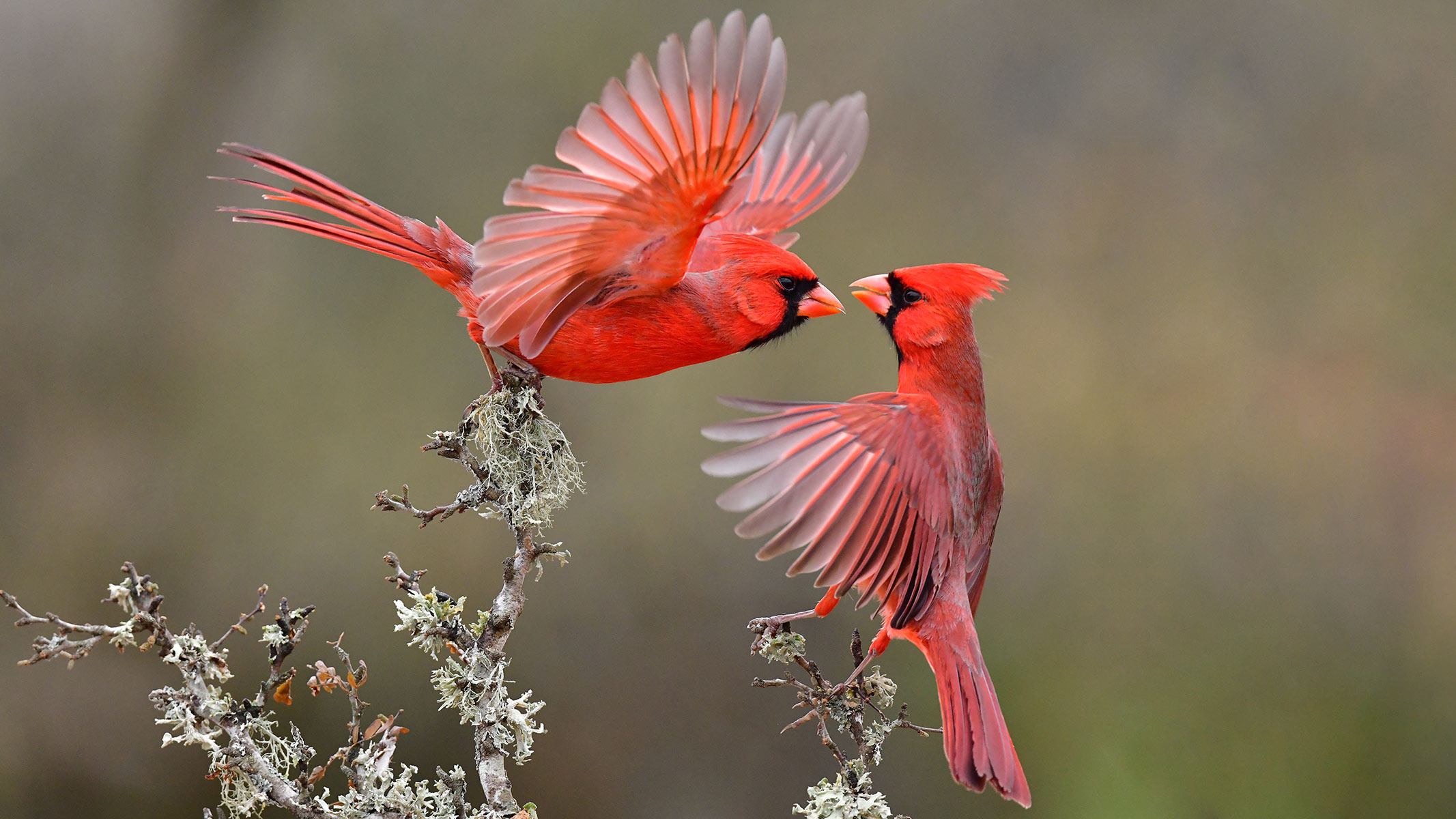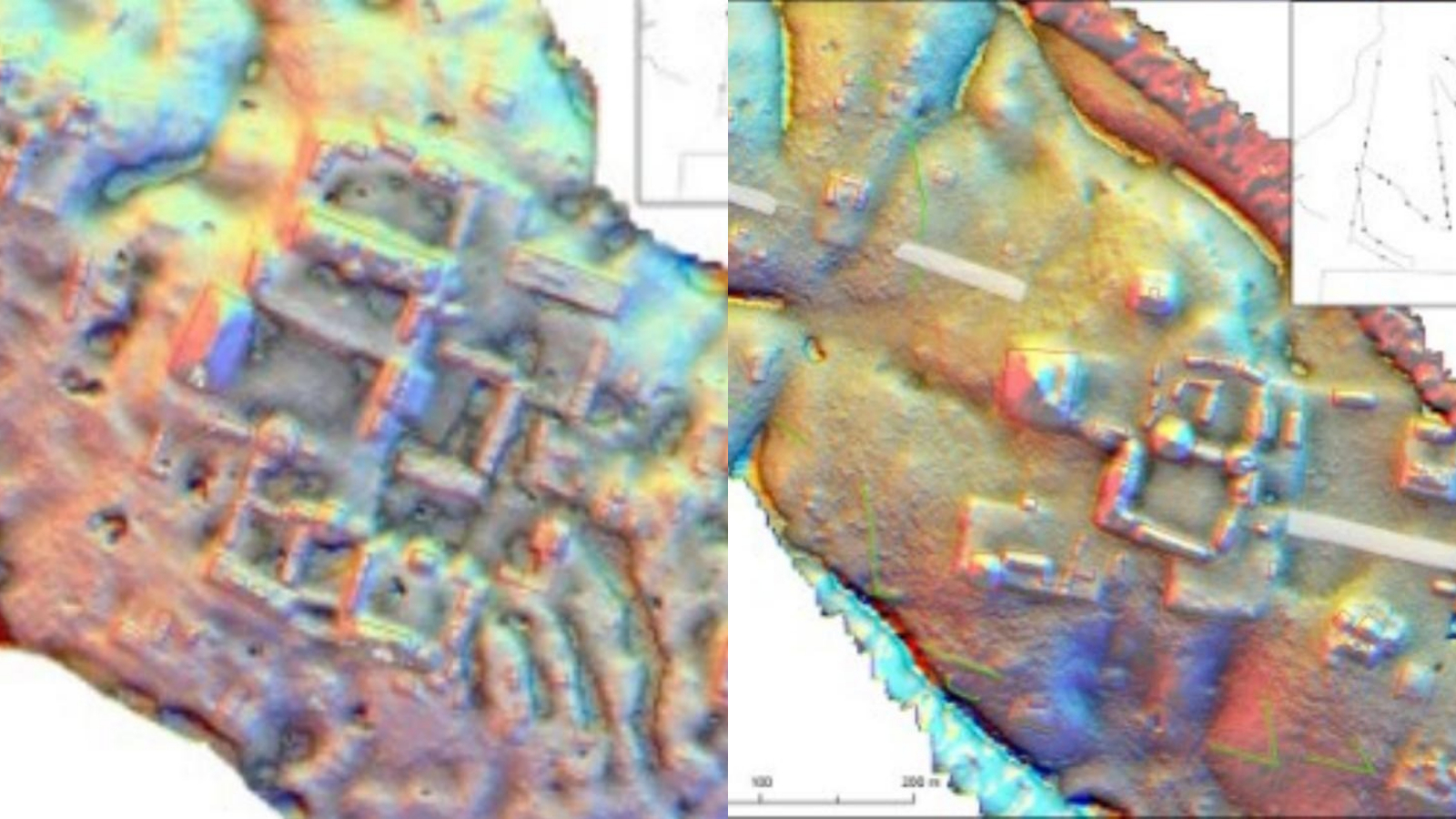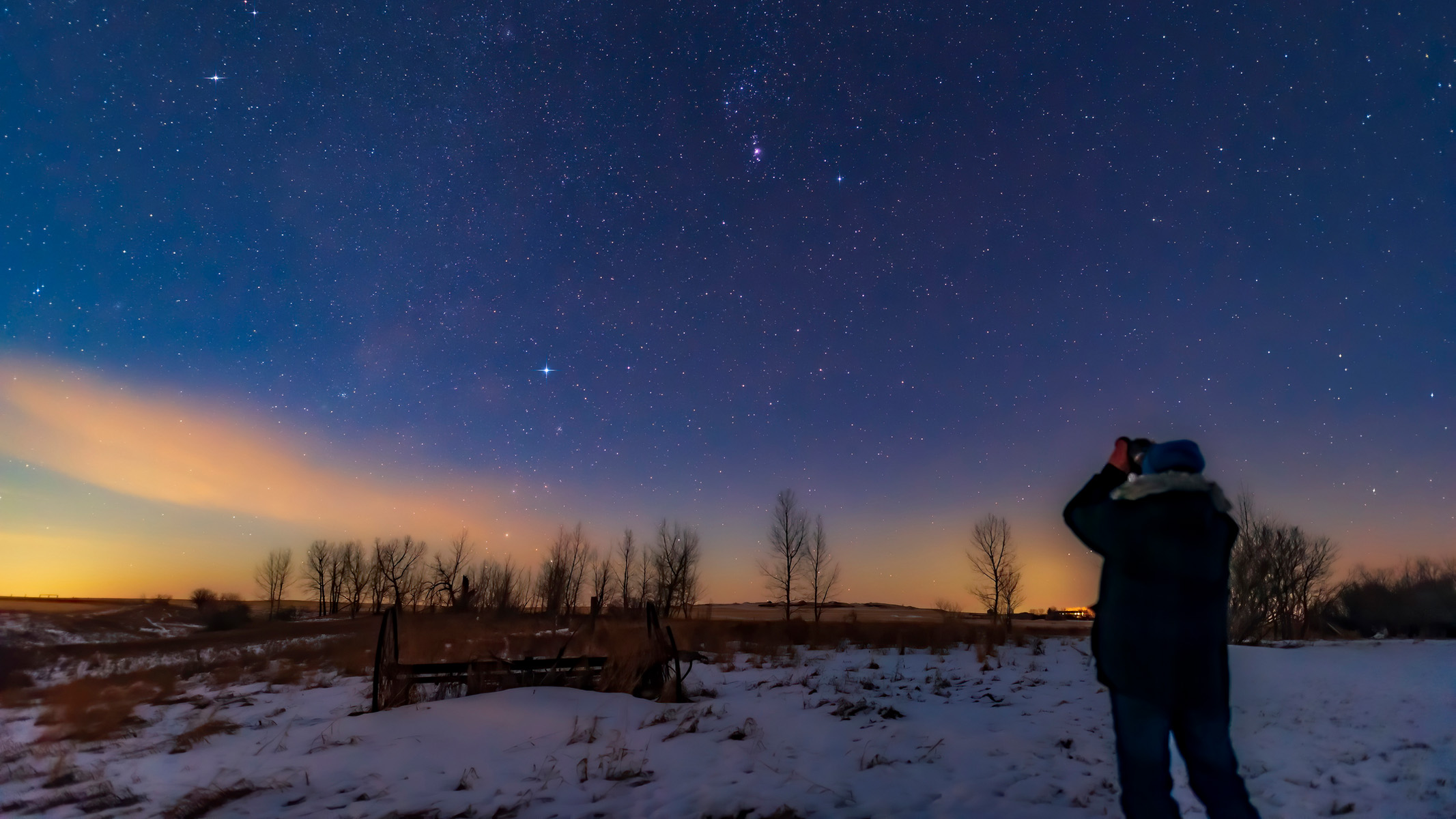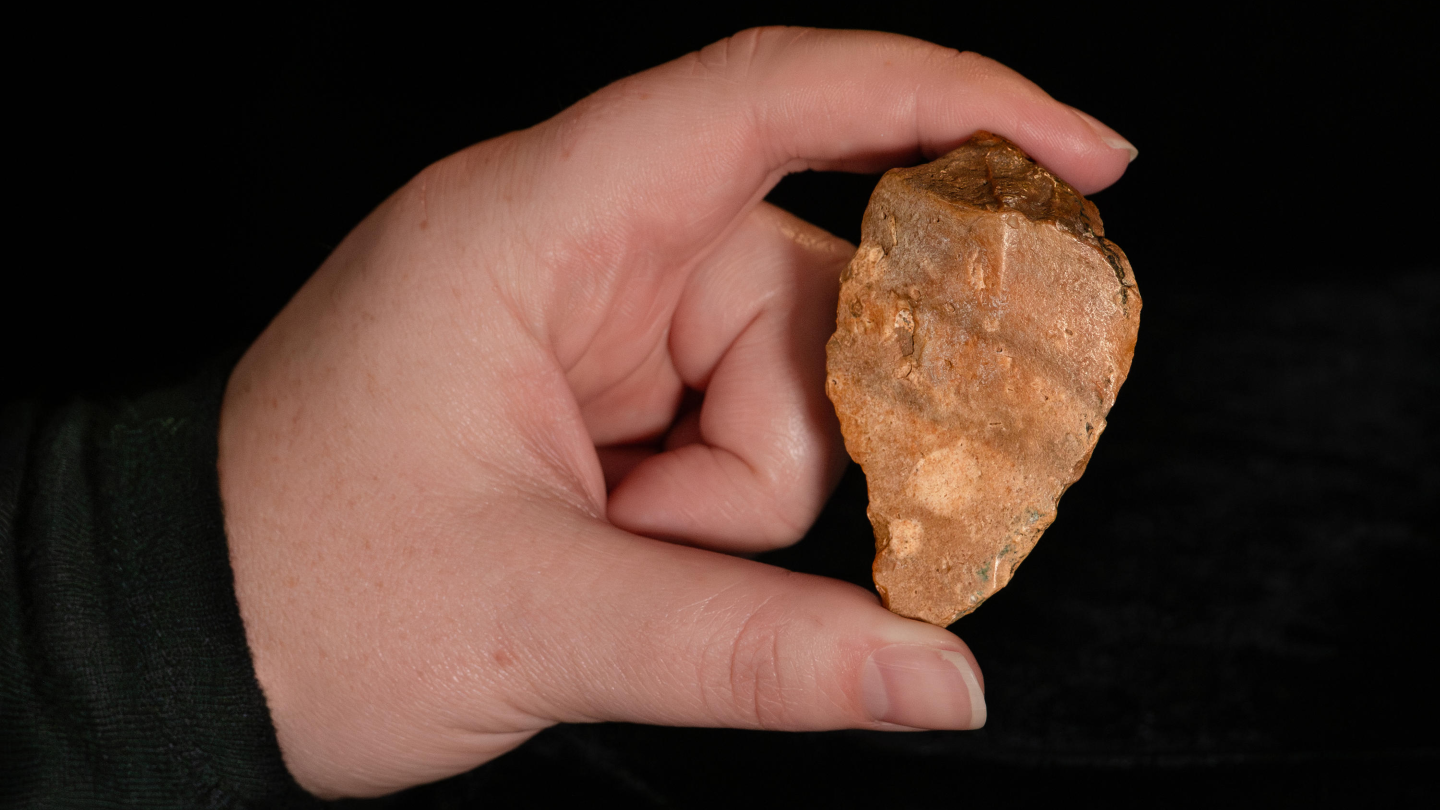Whether you’re a keen birder or just starting out, using one of the best bird identification apps can enhance your birdspotting experiences. Bird identification apps can help you learn and distinguish between the different species, much the same as a traditional field guide book, but can interactively provide suggestions through submitted images or audio recordings.
Our expert, Alli Smith, Merlin Project Manager, highlights how useful bird identification apps can be: “Field guide apps are so helpful for learning about what birds can be found in specific places at specific times of the year. There are 11,000+ species of birds in the world, and they all have their own distributions and migratory patterns, if they migrate. Having a quick reference guide with range maps for each species can really help you narrow down what you might be seeing.”
While you can spot birds with the naked eye, a bird identification app like one of the options listed here can enhance your experience. Similarly, so can a pair of birdwatching binoculars, or a monocular for spotting distant species.
Additionally, you may be seeking something to help you with both bird-watching and astronomy; in that instance, we’d encourage you to look at our general best binoculars page with many more options fully reviewed and tested by our experts.
We’ve put together this guide, outlining the differences and similarities between the various bird identification apps out there. This list isn’t exhaustive but these are our top picks.
The quick list
Here’s an overview of the best bird identification apps. We give you some details here but, if one grabs your eye, you can find more detailed information further down the page.
The best for learning
The Smart Bird ID app has an interactive and user-friendly platform that allows you to identify birds via their calls or distinguishing features. It also gives you the opportunity to maintain the knowledge you gain through quizzes and more.
Read more below

The best for conscientious birders
Chirpomatic offers a unique feature by offering a bird-safe mode. When this is activated, the app will only play sounds when the phone is held to the user’s ear. This ensures no nesting birds are disturbed.
Read more below

The best for beginners
Picture Bird identifies over 1000 species of birds across the globe, either by sounds or image — a large number for beginners to get to grips with, without it feeling overwhelming. Plus, the interface is user-friendly.
Read more below

The best for North America
While other bird identification apps focus on birds found across the world, Audubon focuses solely on bird species found in North America. This makes this app a great option for those interested in more local birds.
Read more below

The best for citizen science
BirdNET was developed as part of a research project to help computers learn the sounds of birds. When you use this app, the data you collect helps to develop AI as well as provide valuable data on bird species identification and distributions in order to aid conservation efforts.
Read more below
The best bird identification apps we recommend in 2025
Why you can trust Live Science
Our expert reviewers spend hours testing and comparing products and services so you can choose the best ones for you. Find out more about how we test.
Best overall
Designed and developed by Cornell University, the Merlin Bird ID app is a thorough and expert app to help you identify over 10,000 species of birds worldwide. Lots of thought has gone into the design and features within this app — you can identify birds via sounds, images or even through description. The description identification process is so simple, with the app only asking three simple questions before presenting you with a list of options to help you identify the bird you’ve spotted. It’s super easy to use when you’re out on a walk, just hit the ‘Sound ID’ button to capture the bird sounds. Within seconds, the app suggests possible matches, with it being able to identify multiple birds through one recording. It is capable of picking up bird sounds from far away, even through your phone speaker. However, using a parabolic microphone can enhance the app’s ability to pick up further afield bird sounds.
Once the app has identified your bird, you can either cancel the recording or save it. If you opt to save it, the recording, along with your location, will be stored. This is a handy feature for bird enthusiasts who may want to locate the same bird species again and can’t quite remember where they heard it. The app stores all the information for you. Not only this, but for serious birders, you can save your birds to your life list which allows you to log the birds you’ve seen or heard. The photo ID function works just as well, allowing you to upload a picture from your phone (if you’re able to snap one before the bird flies away).
Merlin Bird ID is an AI-suggestion tool that appears to be pretty accurate most of the time — the only time it gets confused is when a bird mimics another sound or another bird. This can lead to incorrect matches. As it is an AI-suggestion tool, every sound you record or photo you upload helps the tool to learn. This means the knowledge gained from this app is a community effort, allowing data to be collected to understand bird numbers in specific regions.
This app has extra features, including ‘bird of the day’ where information is supplied on a particular bird that is likely to be seen or heard within your local area. There are also maps to show the distribution of birds and when they are most likely to be in those areas. But perhaps one of its biggest and best features is its ability to link with the Swarovski Optik AX Visio 10×32 smart binoculars. These binoculars use Merlin Bird ID’s database to identify birds when you view them through the binoculars, so birders can identify bird in real-time. This is clever and one of the first times this has been done.
Available on both Apple and Google Play.
Best for learning
Smart Bird ID is an app built by a birdwatcher, meaning it has everything a keen twitcher will need. With this app, you use your phone’s camera and microphone to capture the bird’s call or an image of the bird. You can also capture a video of the bird for the app to then identify — this isn’t something offered on all bird identification apps and is a well-thought-out additional feature. This app also has a journal you can add your own observation notes to. Not only this, but you can also link the photos or sounds you’ve captured of the bird to this journal. This allows you to keep a thorough record of your bird spotting experiences.
One of the best things about this app is its ability to educate you about birds beyond the experiences you have when out birdspotting. You can share your identified birds with others, listen to bird calls and see images and videos of other birds to improve your knowledge as well as take quizzes to improve your identification skills. While it’s good to identify a bird call while out for a walk, it can be hard to learn these calls and remember which bird it was without the help of extra learning materials such as quizzes. This is a great bonus of this app.
As with most bird identification apps, it works offline so you can ID birds wherever you are. However, this app does cost money to install. The free version has ads whereas there is an option to remove ads for a small fee of $2.99. After this, there are upgrades you can purchase to be able to use more features on the app so do bear this in mind.
Best for conscientious birders
Chirpomatic is a great beginner’s app for bird identification. Unlike the other apps, it can only identify birds via audio. However, this makes it easy for beginners to press the button, record the sound and learn that specific call and bird species — there is no faff. Plus, once a bird has been identified, you get a picture of the bird to then also learn what it looks like. Further information on the bird is also provided allowing you to learn a little about that species, too. The app is so simple to use, making it beginner-friendly.
The best feature of this app is its consideration of the human impact on natural environments. While other apps play back the recording quite loudly (depending on your phone volume, of course), Chirpomatic has a bird-safe mode. When using this bird-safe mode, the app won’t allow playback to happen unless the device is against an ear. There is also a night-time mode which stops light from disturbing the birds you may be listening to. While the bird-safe mode can be switched on and off by the user, the night-time mode is automatic. We think this is a great additional feature that makes this app perfect for those who are very conscious of the natural world around them and want to have as minimal an impact on it as possible.
While you can download and install this app for free, there is a pro version which gives the user a few more features and is ideal for those interested in getting more from their bird identification app. With the pro version, you can organize, rename and export your recordings. When you export the recordings, they will save to your phone so you can see where and when you took the recording. This means you can revisit the same spot to find the same bird if you’re keen to monitor a bird species within your area. You can also share these recordings with your friends and fellow birders. There is an extensive reference section available to pro users where you can access images, descriptions, bird calls and song descriptions to enhance in your birding knowledge. Finally, the pro version offers bird quizzes for you to test your knowledge. You can choose which birds you want to be tested on or move through the built-in levels. This is a fun addition.
While Chirpomatic is a great option, it does only identify around 100 bird species and only within North America so for those outside of that area, another app within this guide may be more suitable.
Best for beginners
As with the previous apps discussed, Picture Bird uses sound and image to help you identify birds. It uses machine deep learning technology aka AI to identify birds through the images or sounds you capture. When you submit a sound or image to the app, it compares it to training sets of millions of photos and sounds in the database to give you an exact match. Along with the identity of the bird, you also get further information including their feeding habits and habitat amongst many more things. These simple yet effective functions make it an appropriate app for beginners — there is plenty of information without feeling overwhelming or complicated to use.
The app boasts a collection function allowing you to store the images or sounds you’ve captured of the observed birds. This collection function makes it easy to find your IDs and you can even share these with friends via bird cards.
Picture Bird can successfully ID over 1000 species of birds worldwide. While this isn’t as high as some of the other apps, such as Merlin Bird ID, this is more than sufficient for beginner birdwatchers who want to learn the most common birds in their local area. For those with more experience, and who may be keen to see less common birds, this app will not suffice.
Best for North America
Unlike the other apps in this guide, Audubon focuses on users offering descriptions of the birds they spot to get an ID. While it is arguably easier to capture a bird call or photo and have an app ID the bird from there, the Audubon app encourages users to actively engage with nature, which isn’t a bad thing. By having to offer descriptions of the bird you wish to identify, users have to pay attention to what is going on around them. This is a great experience for novices to experienced birdwatchers to get closer to nature. Furthermore, the app narrows down the options of possible matches using your location and real-time — this is quite impressive. This means you won’t get a bird suggested to you that isn’t likely to be in your area at that specific time.
The Audubon app only covers bird species found in North America, being able to ID an impressive 800 bird species. While this is a good number, it would improve the app if it could identify more birds but we won’t grumble too much. Regardless, this app is a great option for those in North America looking for a location-specific bird ID app. Using this app can help you engage with the birds that come and go from your own yard as well as to monitor how often you see them and when. This can be a wonderful experience in building your connection to your local nature.
The Sightings feature allows you to capture all your birdspotting experiences in one place. You can record every bird you observe, providing you with a life list of birds you’ve spotted. The app is also clever in that if you want to visit a location with lots of birds, this app can help you identify birding hotspots and real-time sightings. This means that you don’t have to wait for the birds to come to you — you can go and find them.
Best for citizen science
If you’re a keen citizen scientist, you’ll love this bird identification app. BirdNET was developed as part of a research project to help AI learn how to detect and classify bird sounds. Their aim in developing this platform is to support conservation efforts by assisting experts and citizen scientists in their monitoring of bird species. The developers themselves call BirdNET “a citizen science platform”. As with many of the other bird identification apps, you simply press record to capture the bird sound and stop the recording when you’re ready. The app can then identify what calls it heard. However, with BirdNET, when you pick up multiple sounds during a recording, you can select portions of the recording to identify the individual bird calls. With some of the other apps, the birds that have been identified pop up during the recording, and for this reason, are more beginner-friendly. BirdNET is a little different in that it uses your brain more to decipher the individual calls you’ve heard and allows you to analyse these independently. For this reason, it’s better suited for experienced birders rather than novices.
Once you’ve selected the portion of the recording you’re interested in, you press ‘analyze’ and the app uses your time and location (from your phone’s GPS) as well as comparing to a database of bird sounds to identify which bird it is likely to be. It does all of this within seconds which is very impressive. It also gives you a confidence rating which shows how confident the app is that it’s that bird it’s heard. This is a really useful extra step that experienced birders will appreciate if they’re looking for certainty to improve their knowledge.
For birders to gain even more knowledge about the bird they’ve heard, you simply click the blue arrow that appears next to the identified bird and it takes you to three different webpage options which provide a wealth of information about the bird, including recordings for you to compare what you heard against what the bird sounds like so you can be sure it’s a match.
By using BirdNET, you are helping to aid conservation efforts as the more developed the app becomes, the better idea citizen scientists and experts will have about what birds are in which location and when. This can help aid conversation efforts and help protect their habitat. We think that’s a win-win.
Best bird identification apps: comparison
|
Product |
Type of identification |
Location |
Species diversity |
|
Merlin Bird ID |
Sound and image |
US, Canada, Europe, Central and South America and India |
10,000+ |
|
Smart Bird ID |
Sound, image and video |
Worldwide |
1000+ for USA and Canada |
|
Chirpomatic |
Sound |
USA |
100 birds |
|
Picture Bird |
Sound and image |
Worldwide |
1000+ |
|
Audubon Bird Guide |
Description |
North America |
800 birds |
|
BirdNET |
Sound |
Worldwide |
3000+ |
Our expert

Alli Smith
Alli is the Merlin Project Coordinator at the Cornell Lab of Ornithology, where her work focuses on outreach and figuring out how to make the best tools possible to help people learn about birds. She fell in love with birds on a middle-school trip to see the horseshoe crabs and shorebirds of the Delaware Bay, and she hasn’t stopped birding since! She believes in the power of community to make a positive impact on bird conservation, and she’s thrilled to be able to support birders worldwide through her role on the Merlin Bird ID app team.
Best bird identification apps: Frequently asked questions
What is the best bird identification app?
Our expert Alli Smith, Merlin Project Manager, distinguished between the different types of apps available and their usage, “I think you can categorize bird ID apps into two categories: apps that are like digital versions of traditional paper field guides, and apps that use AI to identify birds in photos or sound recordings. Some apps do both”. While apps that use AI to help identify birds are great, Alli advises caution, “When an app identifies a bird in a photo or a sound, the machine learning model is matching what it sees to what it was trained in. It’s a suggestion, rather than an authoritative identification. It’s up to you as the human observer to see the bird with your own eyes or listen with your own ears and decide for yourself whether the ID is correct.” With this in mind, the best bird identification app is one that you can use with ease and supplies the information you’re after. They all offer a similar experience but using a few can give a rounded experience, with some offering slight variations over others. Alli said, “I’d recommend downloading a bunch and trying them all out! All of them have their own strengths, and I think they all complement each other well. Most birders I know have multiple downloaded. I’d start with some trusted, free apps published by scientific or conservation-focused organizations”. Alli added, “I think the biggest value to any app is that it can help point you in the right direction. Birding is hard! Having an app to help narrow down an ID, or cue you in on what bird to look out for can help you get your eyes or ears on the bird faster.”
Why would someone want to consider using a bird identification app?
Bird identification apps can make it quicker to identify a bird when you’re out and about, or even at home in your garden. Some apps that use AI allow you to input a date and location which will help narrow down the options, giving you a list of birds that are likely to be in your area at that time. This is immensely helpful versus trudging through a paper field guide to find the information. As our expert, Alli Smith, said, “Apps that use AI to identify birds in photos or sounds are helpful because they can help further guide you in the right direction.” This means that bird identification apps can be useful to help birders, or novices, to know what to look for in a certain area. By hearing the sound ID first and seeing a picture of the bird on the app, a birder can then use their binoculars to search for the bird based on that information. It creates a rounded experience from a sound to a visual of the bird in real-time and can give a sense of accomplishment when you manage to spot the bird you first heard through the app.
How accurate are bird identification apps?
While it’s tempting to see AI as a reliable source for birding, apps that use AI can still get things wrong, as the machine is always learning and the apps are only as good as the material they learn from. Our expert, Alli Smith, Merlin Project Manager, commented, “Apps that use AI to identify birds in photos or sounds are only as good as the data that was used to train them, and they can make mistakes, especially with birds that look or sound similar, so they’re not always accurate. Mimics, like Northern Mockingbirds, are especially hard to identify properly by sound. Similar-looking species, like gulls or some warblers in their non-breeding plumage, can also be tricky to ID by sight, both for humans and for apps. If an app is suggesting a particularly rare ID, it’s probably not correct! It’s up to you as a human to use your best judgement and make the final ID for yourself.” So, while bird identification apps are a great addition to your birding experience, they are just that — an addition. This is why we recommend pairing one (or more) of these apps with one of the best binoculars for bird-watching so you can improve your bird knowledge and become more confident on the IDs that app is suggesting. Alli Smith also recommends reducing sound disturbance and getting good quality photos to improve accuracy, “I’d recommend trying to get as clear a photo as possible with the whole bird visible and in focus. For sounds, minimizing background noise will help – cars, airplanes, running water, your own footsteps, people talking all make noise and can make it harder for Merlin to work.”
How to choose the best bird identification app for you

Our expert, Alli Smith, Merlin Project Manager, gives some advice on how to choose the best bird identification app, “If you’re looking for a field guide app to replace your paper field guide books, I’d think about whether you prefer photos or illustrations. Some apps, like Merlin, use photos in their guide. Seeing a real bird in different postures can be useful — it’s an honest look at what you might actually see in the field. But, a downside is that no photo can fully capture every field mark perfectly. There might be a branch obscuring part of the bird or maybe it’s standing in water and you can’t see the color of its legs. For that reason, some people prefer illustrations.
A huge advantage of illustrated guides is that the artist can intentionally include every field mark in the illustrations, so you might get a more complete idea of what the bird looks like. Some very beloved paper bird guides, like the Sibley Guide to Birds or the Collins Bird Guide, have app versions that include all the illustrations and information from the book.”
When it comes to apps that use AI to help identify birds, Alli Smith suggests looking at reputable apps, “If you’re considering apps that use AI to identify birds, I’d recommend looking at who publishes the app and how it was developed. AI models are only as good as their training data. If the app is produced by a scientific institution or a conservation organization, you can expect it to be reasonably accurate.”































